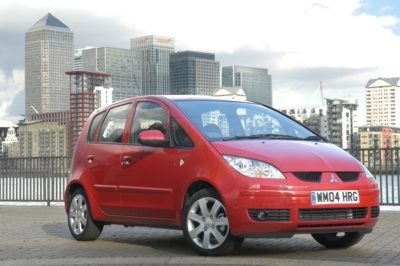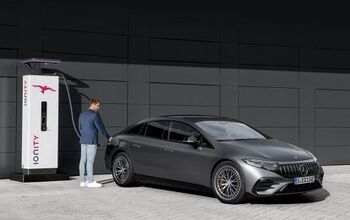Capsule Review: 2005-2008 Mitsubishi Colt

You already have Schadenfreude, Rucksack, Kindergarten, Fahrvergnügen. May I offer another useful German compound word? Verschlimmbesserung. Meaning: making something worse (in the process of trying to improve it). Car companies are good at Verschlimmbesserung, as proven by the Mitsubishi Colt.
The Mitsubishi Colt is like a slightly less sophisticated but cheerful cousin to the Honda Fit. It was developed in cooperation with Daimler (the Smart ForFour was almost identical but bombed in the market, and got discontinued soon after its 2004 introduction). Both Colt and ForFour had great roominess and versatility. There is more interior space than in a Golf and the sliding rear seats provide E-class rear legroom upon request.
To me, French designer Olivier Bouley did a fine job of making the Colt look tidy, coherent and well-proportioned. I have no qualms with the Colt’s tidy handling either, which is closer to the floaty, comfortable French ideal than to the jitteriness of the Fit. One Colt I drove was equipped with the tiny 1.1L, 75HP, three-cylinder engine. Pre-recession Americans would find it pathetically wanting in torque, but when I drove it in Lisbon and through the hills of central Portugal, I liked how the engine enjoyed being revved endlessly, felt lightweight over the front suspension and never got loud. I have also driven the 1.3L four, but to me that’s an underwhelming, generic engine that has none of the charm of the basic package.
For 2009, Mitsu has facelifted the Colt: new sad-agressive styling (thumbs down), no more sliding rear seats (running out of thumbs!), better interior plastics (which doesn’t make that great a difference), and better noise insolation (now, this is very welcome; the old-style Colt was a boomy box). I still prefer the old one, now selling at discount prices, starting at 8.9K Euros (in Europe), which is a bargain. I’d recommend this car to anybody in Japan, Germany or Australia (it seems they’re being sold everywhere except in the U.S.), who is looking for very pleasant, basic transportation at a price point way below the Fit.

More by Martin Schwoerer
Latest Car Reviews
Read moreLatest Product Reviews
Read moreRecent Comments
- Doug brockman There will be many many people living in apartments without dedicated charging facilities in future who will need personal vehicles to get to work and school and for whom mass transit will be an annoying inconvenience
- Jeff Self driving cars are not ready for prime time.
- Lichtronamo Watch as the non-us based automakers shift more production to Mexico in the future.
- 28-Cars-Later " Electrek recently dug around in Tesla’s online parts catalog and found that the windshield costs a whopping $1,900 to replace.To be fair, that’s around what a Mercedes S-Class or Rivian windshield costs, but the Tesla’s glass is unique because of its shape. It’s also worth noting that most insurance plans have glass replacement options that can make the repair a low- or zero-cost issue. "Now I understand why my insurance is so high despite no claims for years and about 7,500 annual miles between three cars.
- AMcA My theory is that that when the Big 3 gave away the store to the UAW in the last contract, there was a side deal in which the UAW promised to go after the non-organized transplant plants. Even the UAW understands that if the wage differential gets too high it's gonna kill the golden goose.




































Comments
Join the conversation
Test drove one a few years back. Pretty good handling and decent power. CVT transmission took a little getting used to. However I found the seats oddly uncomfortable. They seemed to cut off the circulation to my legs... leading to numbness after less than 10 minutes driving. It's unusual as I own a similar vintage Lancer and have no issues with it. Must be a very different seat design. The foot park brake is a demented idea, from a practicality and safety point of view. I have seen seasoned manual transmission drivers get into an auto and instinctively try to press the clutch... guess what would happen here. Foot brakes feel unnatural and there's something odd about overruling decades of common sense design. And no, the Colt doesn't have a front bench seat. The indicator ticker was on the far left in a right hand drive car. It sounded odd... very odd for a Japanese built car. Shows through the European design underpinnings. Cargo cover was an optional extra at time of test drive. I consider this an absolutely mandatory item for any hatch. Who wants potential thieves to have a good look at the goodies in your boot?
@Michal Where did you drive one? Europe didn't get CVTs or foot-operated park brakes. All European Colts were made in the Netherlands at NedCar (the former DAF car factory that used to make the Mitsubishi-platform Volvo S/V40)